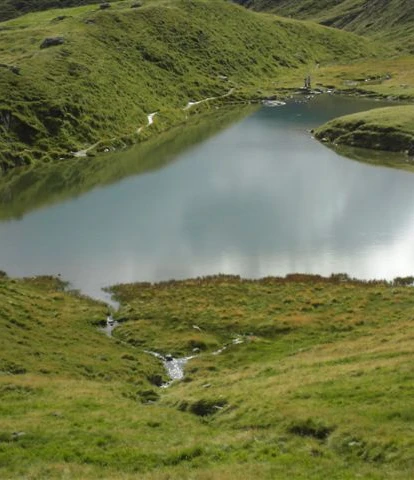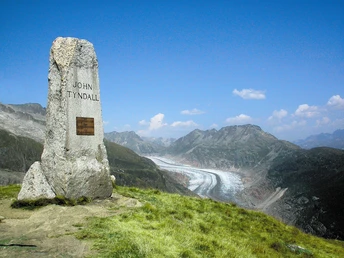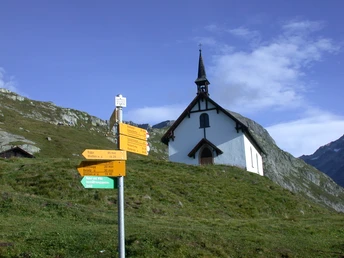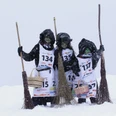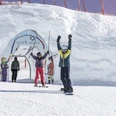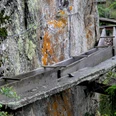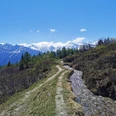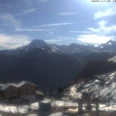- Photos & Map
How would you like to arrive?
- Description
- Good to know
- Nearby
Download GPX file
- 2:00 h
- 4.95 km
- 306 m
- 306 m
- 2,095 m
- 2,351 m
- 256 m
- Start: Belalp cable car mountain station (2095 m)
- Destination: Belalp cable car mountain station
The hike first takes you high up to the Tyndall Monument. The Irish glaciologist and alpinist John Tyndall (1820-1893) spent 44 summer months on the Belalp, wrote scientific books here and climbed a large number of mountains. The monument on the Triembiel was erected by his widow Louise in memory of her husband.
With a view of the Great Aletsch Glacier, you now descend and once you reach the Belalp Hotel, follow the path in the direction of Lake Lüsgersee.
You will pass the "Färricha". This is where the sheep are distributed to their respective owners during the sheepfold.
Finally you reach the Lüsgersee. Here you can discover mountain newts, grass frogs and common toads, and if you like, you can cool off by jumping into the fresh mountain lake.
Good to know
Pavements
Best to visit
Directions
Belalp mountain station - Bruchegg - Tyndalldenkmal - Aletschbord - Färricha - Lüsgersee - Belalp mountain station
Tour information
Loop Road
Stop at an Inn
Equipment
Directions & Parking facilities
From western Switzerland: A9 Lausanne - Vevey, or north-western Switzerland: A12 Bern - Vevey: A9 - Sierre: main road Sierre - Brig
From north-western Switzerland: A6 Berne - Thun - Spiez: main road Spiez - Kandersteg (Lötschberg tunnel car transport) - Goppenstein - Gampel - Brig
From eastern and central Switzerland: Andermatt - Realp (year-round Furka car transport; in summer via Furka Pass) - Oberwald - Brig
From Ticino (in summer): Airolo - Nufenenpass - Ulrichen - Brig
Or via Centovalli - Domodossola - Simplonpass - Brig
From Italy (Aosta, Mt. Blanc Tunnel): Aosta - Grand Saint Bernard tunnel (over the pass in summer) - Martigny: A9 motorway - Sierre: Sierre - Brig main road.
Or via Domodossola - Simplon Pass - Brig
Blatten bei Naters
From Brig you can reach Blatten bei Naters via Naters, then take the cable car to the car-free Belalp.
You can find more info at:
You can reach Belalp from Blatten by cable car.
You can find the timetable and further information on how to get there at: www.belalp.ch
Additional information
Belalp Bahnen AG
Blatten - Belalp Tourismus AG
Literature
Author´s Tip / Recommendation of the author
- Enjoy a fine coffee at the Hotel Belalp
- Lake Lüsger
Safety guidelines
Especially in autumn, you should also be aware that leaves lying on the ground can hide bumps, roots, stones or holes in the path. After storms, trees can still fall over or branches can fall down. Especially in adverse weather conditions, muddy and slippery passages can occur on natural paths. You have to expect this kind of damage to paths when you go on a hike.
Not all rocks or precipices are secured with ropes or railings. In some cases surefootedness is required. If you are of the opinion that certain sections of the trail are not passable for you, you should avoid them.
Map
Nearby
